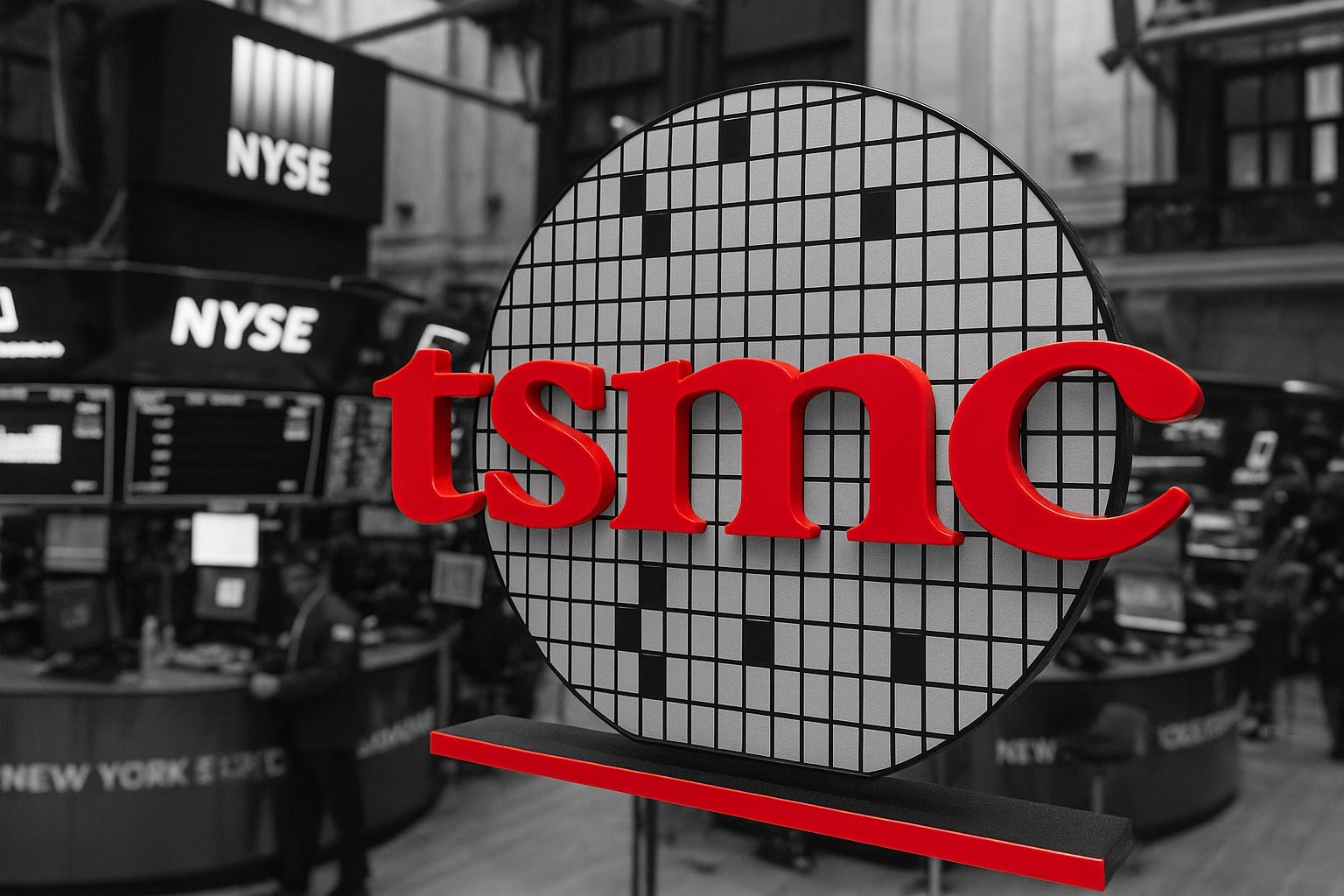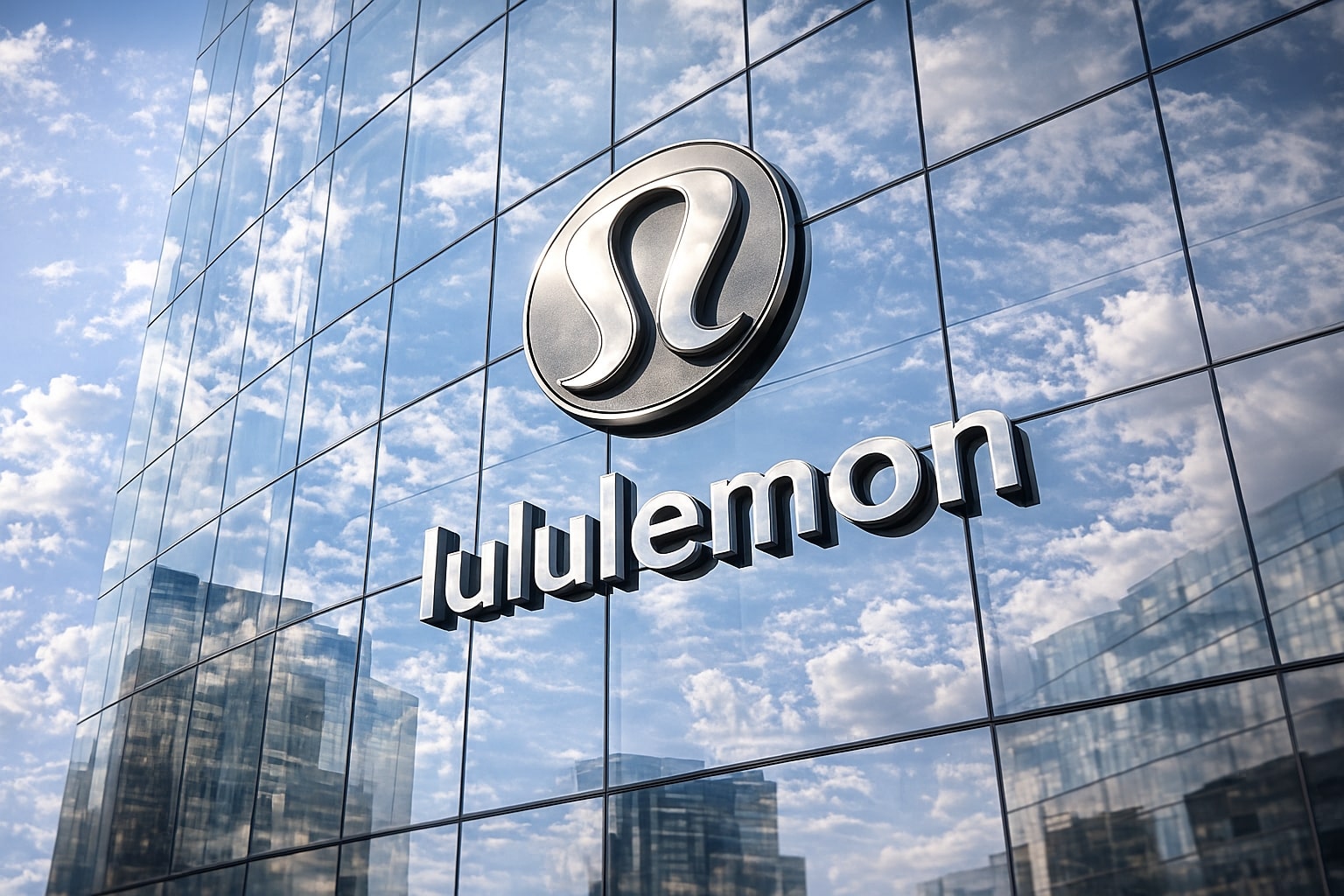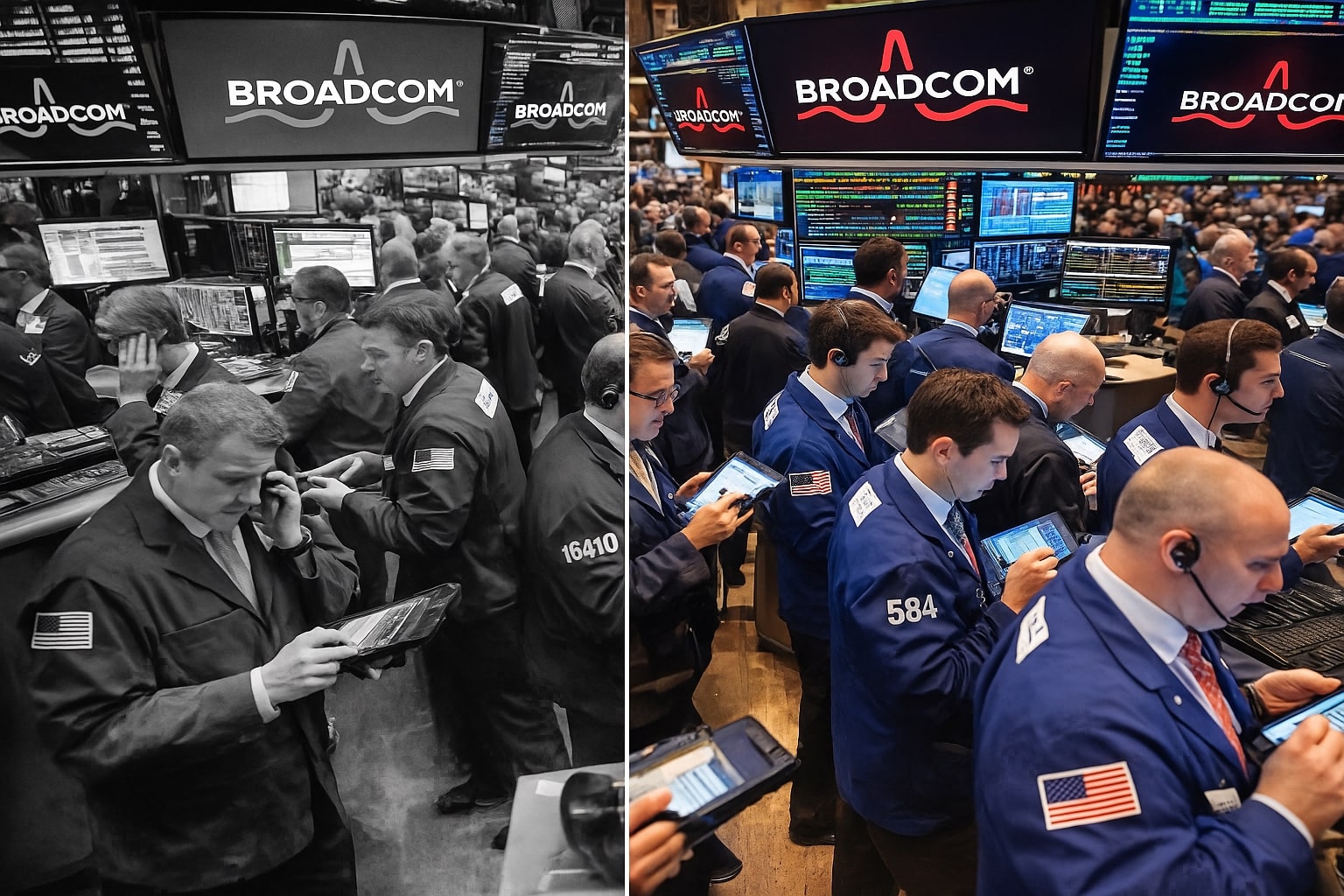
TSMC Stock Price Forecast - NYSE:TSM Holds Near $295 as AI Boom Drives Record Revenue Growth
Taiwan Semiconductor (NYSE:TSM) surged 52% YTD to $295.08, powered by 40.8% YoY revenue growth to $33.1B, a 59.5% gross margin, and record AI-related demand | That's TradingNEWS
TSMC (NYSE:TSM) Extends Global Lead as AI Demand and 2nm Transition Drive Record Growth
Taiwan Semiconductor Manufacturing Company (NYSE:TSM) remains the epicenter of the global semiconductor revolution, trading near $295.08 after an extraordinary 52% year-to-date surge. The company’s third-quarter results confirmed its unrivaled role in the AI supply chain, with revenue jumping 40.8% year-over-year to $33.1 billion, driven by robust demand across high-performance computing, smartphones, and automotive chips. Gross margin expanded to 59.5%, reaffirming TSMC’s unmatched operational leverage at the most advanced process nodes.
AI Boom and Record Q3 Momentum Reinforce Market Leadership
TSMC’s Q3 performance underscored its dominance as the foundry powering the world’s AI transformation. Advanced process nodes of 7nm and below accounted for 74% of wafer revenue, with the High-Performance Computing (HPC) division — the backbone of AI data centers — contributing 57% of total sales. Smartphone revenue rebounded sharply, climbing 19% quarter-over-quarter as global handset demand recovered, while automotive and IoT segments rose 18% and 20%, respectively.
Chief Executive Dr. C.C. Wei emphasized that AI demand remains the company’s primary growth catalyst into 2026 and beyond, citing “exponential token expansion” as evidence of accelerating AI model adoption. These dynamics have transformed TSMC’s revenue base from cyclical to structural, positioning it as the indispensable supplier to hyperscalers, semiconductor leaders, and sovereign AI projects worldwide.
Transition to 2nm and A16 Technologies Redefines Efficiency
TSMC’s 3nm (N3) process has already become the industry benchmark, powering chips for NVIDIA (NASDAQ:NVDA), Advanced Micro Devices (NASDAQ:AMD), and Apple (NASDAQ:AAPL). The company’s next wave of innovation — its 2nm (N2) and A16 Super Power Rail (SPR) nodes — will significantly boost power efficiency and computational density, enabling more advanced AI workloads at lower energy cost.
Volume production for the N2 node begins later this year, with a faster ramp through 2026, driven by both smartphone and AI applications. The A16 line, scheduled for production in the second half of 2026, is expected to revolutionize energy delivery for data center-grade chips. These technologies not only extend TSMC’s performance advantage but also secure its lead against Samsung Electronics (KRX:005930) and Intel (NASDAQ:INTC), whose foundry divisions continue to lag in yield and efficiency.
Capital Spending and Global Expansion Secure Long-Term Growth
To sustain leadership in a capital-intensive sector, TSMC is executing an aggressive yet disciplined expansion strategy. For 2025, the company expects capital expenditures between $40 billion and $42 billion, with roughly 70% dedicated to advanced processes and 20% to packaging, testing, and specialty technologies. This investment pipeline includes major projects in the United States, Europe, and Taiwan.
The Arizona fab cluster, which received substantial U.S. federal incentives, is advancing toward high-volume production of 3nm and 2nm chips by late 2026. Meanwhile, the new Dresden, Germany fab, developed with European Union support, enhances TSMC’s presence within the transatlantic semiconductor corridor. Taiwan remains the company’s core manufacturing hub, with continued investment in advanced packaging and AI chip fabrication. These parallel expansions not only diversify geopolitical risk but also strengthen its global supply resilience.
Financial Power and Valuation Advantage
Despite its aggressive capital commitments, TSMC maintains exceptional financial stability, holding over $90 billion in cash and marketable securities. The company’s EV/EBITDA of 14.8x and forward P/E of 24x remain deeply attractive relative to peers such as ASML Holding (NASDAQ:ASML), which trades at a premium multiple. The company’s free cash flow margin near 40% reinforces its ability to fund expansion while sustaining a dividend yield of 1.06%, signaling management’s confidence in long-term profitability.
Analysts have continued to lift their forecasts following the Q3 results. Susquehanna recently increased its target from $300 to $400, while Barclays raised its outlook to $330, maintaining an “Overweight” stance. Wall Street consensus is strongly bullish — out of 12 analysts covering the stock, nine rate it a “Strong Buy.” With a market capitalization of $1.23 trillion, TSMC’s valuation remains compelling given its 40% AI-driven growth trajectory and unmatched process leadership.
Read More
-
Palantir Stock Price Forecast - Can a $440B AI Defense Powerhouse Grow Into Its $184.74 Price?
16.12.2025 · TradingNEWS ArchiveStocks
-
XRP Price Forecast - XRP-USD Drops to $1.87 as Whale Dumps $721M While XRP ETFs Quietly Cross $1B
16.12.2025 · TradingNEWS ArchiveCrypto
-
Oil Price Forecast - Oil Slide Hard; WTI CL=F Near $55, Brent BZ=F Below $60 as Market Bets on 2026 Supply Glut
16.12.2025 · TradingNEWS ArchiveCommodities
-
Stock Market Today: Dow (^DJI) 48,404 And S&P 500 (^GSPC) 6,812 Slip As Jobs Hit +64K And AVGO Sells Off
16.12.2025 · TradingNEWS ArchiveMarkets
-
GBP/USD Price Forecast - Pairs at 1.34 as Weak U.S. Jobs Data Clash with BoE Cut Bets into Year-End
16.12.2025 · TradingNEWS ArchiveForex
AI Demand, Token Growth, and Structural Supply Constraints
The rapid acceleration of AI model deployment has created unprecedented demand for TSMC’s most advanced nodes. According to Dr. Wei, token generation from AI applications has been “exponentially increasing every three months,” indicating that computational capacity — not demand — is the current bottleneck. TSMC’s forecast of 40–45% CAGR in AI-related revenue aligns with this exponential growth, while its customers’ migration from 3nm to 2nm will further amplify chip performance efficiency by 15–30% per generation.
The company’s unique position enables it to withstand the cyclical shocks typical of the semiconductor industry. While competitors like Samsung and Intel balance integrated models, TSMC’s pure-play foundry strategy allows it to expand capacity only where long-term offtake contracts exist, reducing capital risk. Its strong client relationships with NVIDIA, AMD, and Broadcom (NASDAQ:AVGO) ensure consistent revenue visibility even during macro slowdowns.
Geopolitical Dynamics and the Silicon Shield Strategy
Geopolitical uncertainty continues to shadow Taiwan’s semiconductor ecosystem, but TSMC’s diversification strategy is mitigating regional exposure. The U.S. now represents 76% of total revenue, while China’s share has fallen to just 8%, reflecting a deliberate pivot toward Western supply chain security.
This realignment aligns with the U.S. “Silicon Shield” policy, which positions TSMC as both a technological and geopolitical asset. The company’s $165 billion multi-year investment plan in North America ensures that chip fabrication for critical industries — from defense to AI — remains accessible to Western markets. While tensions with China remain a long-term risk, TSMC’s cross-regional expansion ensures resilience against supply disruptions and political shocks.
Forward Guidance and Earnings Outlook for 2026
TSMC projects Q4 2025 revenue between $32.2 billion and $33.4 billion, up 22% year-over-year, with a gross margin of 59–61%. Management expects full-year growth in the mid-30% range, led by sustained AI infrastructure buildouts and smartphone recovery. Looking into 2026, analysts forecast 19% revenue growth and a 46% increase in profitability, driven by a full-year contribution from 2nm and A16 nodes.
Internal models estimate earnings growth above 40% through 2027, supported by expanding wafer volumes, pricing power in advanced nodes, and favorable supply contracts. The company’s long-term capital discipline positions it for continued margin expansion as AI adoption accelerates across consumer and enterprise markets.
Valuation Models and Price Target Outlook
A conservative discounted cash flow model indicates a fair value near $402 per share, based on a 25% EBIT CAGR and a 3.5% terminal growth rate. In a more aggressive scenario — incorporating the company’s current 40% EBIT growth trajectory — fair value reaches $569, implying an 86% upside from current levels. The company’s robust return on invested capital (ROIC), efficient capital turnover, and stable dividend policy reinforce its position as a high-quality compounder within the semiconductor ecosystem.
These projections align with analysts’ upgraded targets, placing TSMC among the best risk-reward opportunities within the AI hardware sector. Its profitability and execution discipline distinguish it from peers that are still grappling with scale and cost optimization challenges.
Verdict: TSMC (NYSE:TSM) Remains a Strong Buy into 2025
TSMC’s combination of technological dominance, record-breaking AI-driven growth, and disciplined capital strategy cements its leadership for the coming decade. At current levels near $295, the stock remains materially undervalued relative to its growth prospects, with consensus price targets clustering around $400–$420.
As hyperscalers like NVIDIA, AMD, and Alphabet (NASDAQ:GOOGL) accelerate AI infrastructure spending, TSMC’s foundry capacity will remain the bottleneck that defines the pace of global innovation. Its execution precision, diversified geography, and balance sheet strength make it a core holding for investors seeking exposure to the AI revolution.
TSMC (NYSE:TSM) stands as the single most critical infrastructure company in modern technology — a Buy with sustained upside through 2026 as it expands its global manufacturing footprint and leads the transition into the 2nm era. View the real-time chart here and explore insider transactions for the latest institutional activity driving the stock’s continued rally.


















